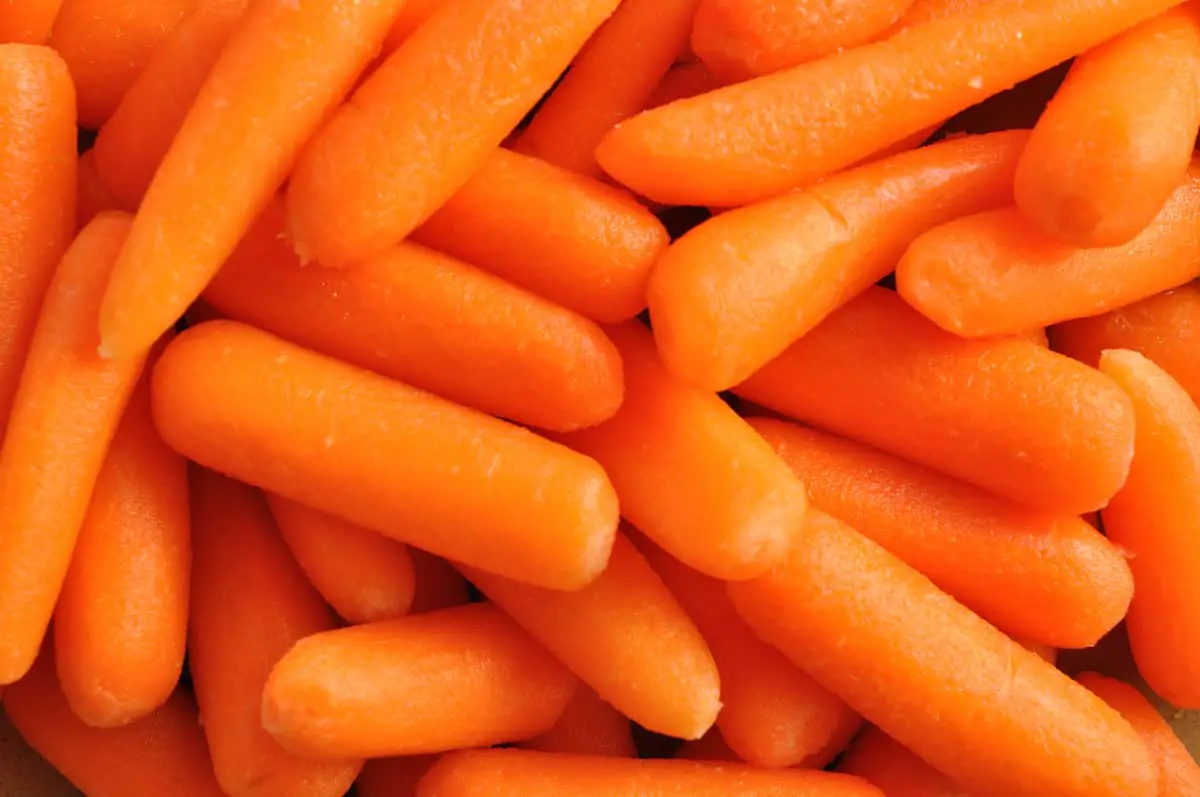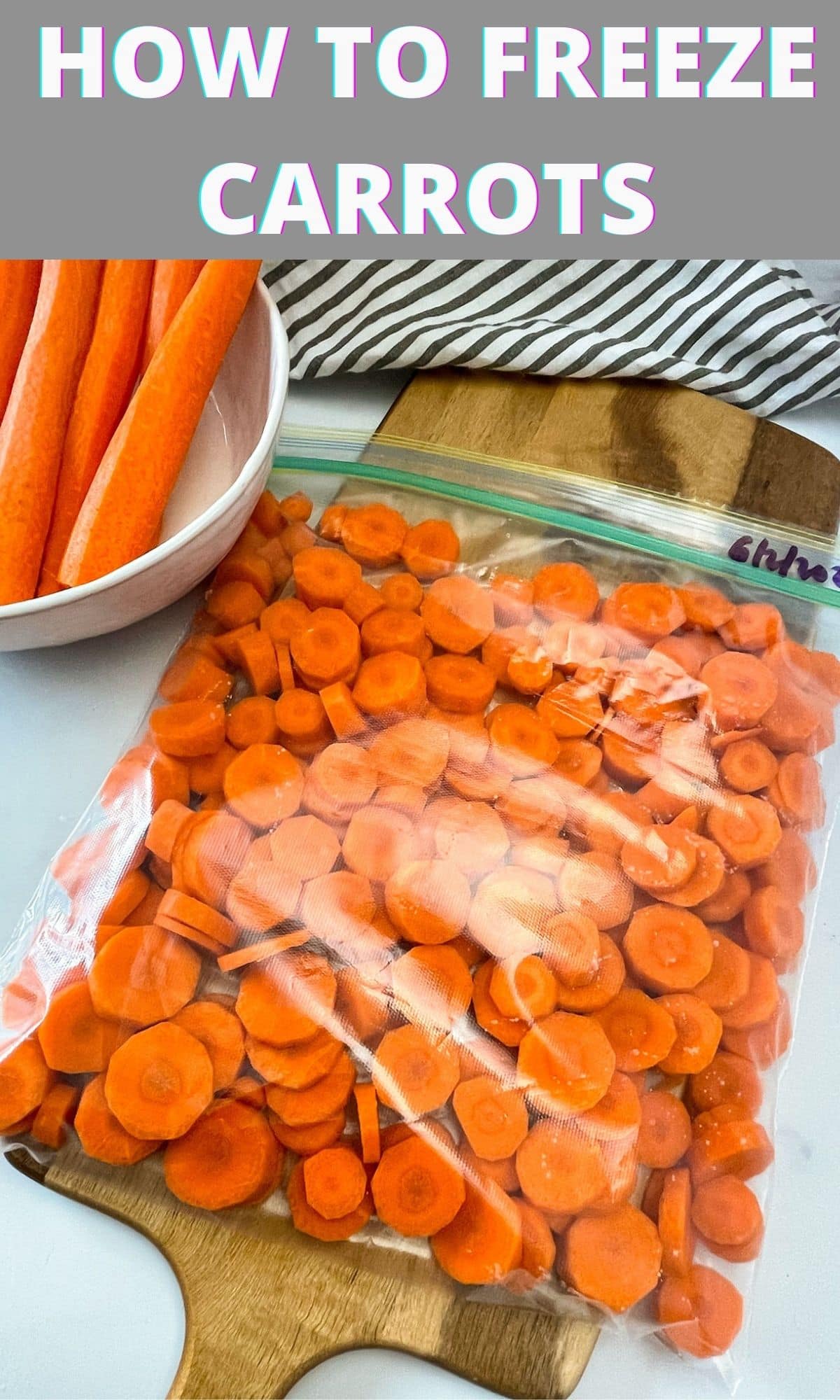So you’ve got a surplus of baby carrots and you’re wondering what to do with them before they go bad? Look no further! This article is here to provide you with the ultimate guide on how to freeze those adorable little carrots. Whether you’re a busy parent trying to preserve the freshness of your baby carrots or a health-conscious individual looking to stock up on nutritious snacks, freezing baby carrots is a simple and convenient solution. In this guide, we’ll walk you through the step-by-step process of freezing baby carrots, ensuring that you can enjoy their crunch and vibrant flavor for months to come.

Preparing Baby Carrots for Freezing
When it comes to freezing baby carrots, the first step is to properly prepare them. Start by washing the baby carrots under cool running water to remove any dirt or debris. This is an important step to ensure that your frozen carrots are clean and fresh.
After washing, you’ll want to trim off the tops and tails of the baby carrots. This is purely a personal preference, as some people prefer to leave them intact for a more rustic look. However, removing the tops and tails can make the carrots easier to handle and store.
Next, you have the option to peel the baby carrots or leave the skin on. If the carrots are organic and the skins are thin, you might choose to keep the skin on to add extra nutrients and color to your frozen carrots. However, if the skins are thick or you prefer a smoother texture, peeling the carrots might be the best option for you.
Once the baby carrots are trimmed and peeled (if desired), you can cut them into your desired shapes or sizes. Some people prefer to freeze their baby carrots whole, while others might opt for slices or even julienne cuts. Consider how you plan to use the carrots in the future and tailor the shapes or sizes accordingly.
Blanching Baby Carrots
To maintain the quality and texture of your frozen baby carrots, blanching is a crucial step. Blanching involves briefly cooking the carrots in boiling water and then rapidly cooling them. This process helps to stop enzyme activity and preserve the carrots’ color, flavor, and nutrients.
Start by boiling water in a large pot. The pot should be big enough to accommodate the baby carrots without overcrowding. Once the water is boiling, carefully add the baby carrots. For best results, blanch the carrots in small batches, rather than overcrowding the pot.
The blanching time will depend on the size and thickness of your baby carrots. As a general guideline, blanch small baby carrots for 2 minutes, medium baby carrots for 3 minutes, and larger baby carrots for 4 minutes. However, it’s important to note that blanching times can vary, so it’s always a good idea to test the carrots for doneness by sampling a small piece.
After blanching, it’s crucial to cool the carrots quickly to halt the cooking process. Transfer the blanched carrots to an ice bath, which is a bowl filled with ice and water. Let the carrots sit in the ice bath for the same amount of time as they were blanched. This will help preserve their vibrant color and crispness.
Once the carrots have cooled in the ice bath, drain them thoroughly and pat them dry. This step is important to remove any excess moisture, as it can lead to ice crystals forming during freezing, which can affect the texture of your frozen carrots.

Packaging and Storing Baby Carrots
Now that your baby carrots are blanched and dried, it’s time to package and store them properly to maintain their quality in the freezer. It’s important to choose appropriate storage containers that are suitable for freezing.
One popular option for storing frozen baby carrots is to use freezer bags. Place the blanched carrots in a freezer bag, making sure not to overfill it. Remove excess air from the bag by gently pressing on it or using a straw to suck out the air. This will help prevent freezer burn and keep your frozen carrots in the best possible condition.
Don’t forget to label the bags with the date and contents. This will make it easier for you to identify the carrots and keep track of their freshness. You can use a permanent marker to write directly on the bag or use adhesive labels.
When arranging the bags in the freezer, try to keep them flat to maximize storage space. You can stack them on top of each other or line them up horizontally. Just make sure there is enough space between the bags for air circulation, which will help maintain a consistent freezer temperature.
Using Vacuum Sealing for Freezing Baby Carrots
If you want to take your freezing game to the next level, you might consider using a vacuum sealer. A vacuum sealer removes the air from the packaging, creating an airtight seal that helps to preserve the quality of your frozen baby carrots for an extended period.
To use a vacuum sealer, start by preparing the bags. Fill the bags with blanched baby carrots, leaving some space at the top to accommodate the sealing process. It’s important not to overfill the bags, as this can prevent a proper seal from forming.
Once the bags are filled, carefully place them in the vacuum sealer, following the manufacturer’s instructions. Seal the bags using the vacuum sealer, allowing it to remove the air and create a tight seal around the baby carrots.
Before you store the vacuum-sealed bags in the freezer, don’t forget to label them with the date and contents. This will help you keep track of their freshness and ensure that you use the oldest carrots first.
Now, all that’s left to do is to freeze the vacuum-sealed bags of baby carrots. Place them in the freezer, arranging them in a way that maximizes space while allowing for proper air circulation. Remember to keep them flat for easier storage and retrieval.

Thawing and Using Frozen Baby Carrots
When you’re ready to enjoy your frozen baby carrots, you’ll need to thaw them properly. The best and safest way to thaw frozen baby carrots is to do so in the refrigerator. This slow and controlled thawing process allows the carrots to defrost evenly and retains their texture and flavor.
To thaw the frozen baby carrots in the refrigerator, simply transfer the desired amount from the freezer to a container or plate and place it in the refrigerator. The carrots will gradually thaw over a few hours or overnight, depending on their size and the quantity.
Once the baby carrots are thawed, it’s important to utilize them within a certain time frame to ensure their quality and safety. Generally, it is recommended to use thawed baby carrots within 2 to 3 days to maintain their freshness and minimize the risk of bacterial growth.
If you’re in a hurry and need to cook the frozen baby carrots without thawing, it is possible to do so. However, keep in mind that the texture may be slightly softer, and the cooking time may be longer compared to using thawed carrots. Simply add the frozen baby carrots to your preferred recipe, adjusting the cooking time accordingly.
Incorporating frozen baby carrots into recipes is a great way to add a burst of color and nutrition to your dishes. From soups and stews to stir-fries and casseroles, the possibilities are endless. Experiment with different recipes and techniques to find your favorite way to use frozen baby carrots.
Shelf Life and Quality of Frozen Baby Carrots
It’s important to be aware of the expected shelf life of frozen baby carrots to ensure that they stay safe to eat and maintain their quality. When stored properly, frozen baby carrots can last for approximately 8 to 12 months in the freezer.
However, it’s important to note that while the carrots may still be safe to eat after this period, the quality may deteriorate. The carrots might become soft and lose their vibrant color and flavor. Therefore, it’s always a good idea to use them within the recommended time frame for the best taste and texture.
When it comes to frozen baby carrots, there are a few quality changes that you can anticipate. Freezing can cause some carrots to become softer in texture, which is why blanching is crucial to retain their crispness. The color of the carrots may also fade slightly during the freezing process, but they will retain most of their nutritional value.
It’s important to keep an eye out for any signs of freezer burn or deterioration. Freezer burn can occur when the carrots are exposed to air, causing dryness and discoloration on the surface. If you notice any freezer burn or the carrots appear to be deteriorating, it’s best to discard them to avoid any potential food safety risks.

Other Methods for Preserving Baby Carrots
While freezing is a popular method for preserving baby carrots, there are other options if you’re feeling adventurous. Pickling baby carrots can be a fun and flavorful way to preserve them. By immersing the carrots in a vinegar-based brine, you can create a tangy and crunchy snack that can be enjoyed for months.
Canning is another preservation method that can be used for baby carrots. By pressure canning or using a water bath canner, you can safely seal the carrots in jars, allowing them to be stored at room temperature for an extended period. Canned baby carrots can be used in various recipes or enjoyed on their own as a convenient snack.
If you prefer a different texture and flavor profile, consider dehydrating baby carrots. Dehydrated carrots can be made by removing the moisture from the carrots, resulting in a crunchy and concentrated snack. They can be enjoyed as is, added to trail mix, or even rehydrated for use in soups and stews.
Tips and Tricks for Freezing Baby Carrots
To make your freezing process even more efficient and successful, here are some helpful tips and tricks:
- When freezing baby carrots, consider portioning them into sizes that you’ll commonly use. This allows for easier meal planning and reduces the need to thaw more carrots than necessary.
- If you have a food processor, it can be a time-saving tool for slicing or shredding the baby carrots. This is especially helpful if you’re planning to use the carrots in recipes that require uniform shapes or sizes.
- If you prefer an alternative to boiling, you can steam the baby carrots before freezing. Steaming helps to retain more nutrients compared to boiling, and the carrots will also retain a slightly firmer texture.
- To prevent freezer burn and maintain the quality of your frozen baby carrots, make sure to package them properly. Remove excess air from the packaging, use airtight containers or freezer bags, and avoid overcrowding the bags.
- Labeling and organization are key when it comes to freezing. Clearly label the bags with the date and contents, and consider adopting an organizational system for your freezer to easily locate and rotate your frozen baby carrots.

Safety Precautions and Considerations
As with any food preservation process, it’s important to take necessary safety precautions and considerations to ensure that your frozen baby carrots are safe to eat:
- Before proceeding with freezing, inspect the baby carrots for any signs of spoilage. Discard any carrots that have mold, soft spots, or an off odor, as these can indicate potential foodborne illnesses.
- Use only fresh and high-quality baby carrots for freezing. The fresher the carrots, the better the results will be in terms of taste, texture, and nutritional value.
- Practice proper hygiene and sanitation during the preparation process. Wash your hands thoroughly before handling the carrots, clean all equipment and surfaces, and use clean utensils to prevent cross-contamination.
- If you or anyone in your household has allergies or dietary restrictions, it’s important to be mindful of this when handling and storing baby carrots. Keep them separate from any allergenic foods or ingredients to avoid potential cross-contamination.
Conclusion
In conclusion, freezing baby carrots is a convenient and practical way to prolong their shelf life while maintaining their quality. By following the steps outlined in this guide, you can ensure that your frozen baby carrots are clean, blanched, packaged, and stored properly.
Whether you choose to peel or keep the skin on, slice or leave them whole, freezing baby carrots allows you to enjoy their vibrant color, crunchy texture, and nutritional benefits all year round. Furthermore, the versatility of frozen baby carrots makes them a valuable addition to various recipes and dishes.
Don’t be afraid to experiment with different preservation methods such as pickling, canning, or dehydrating if you’re looking to try something new. With proper storage and handling, you can enjoy the convenience and deliciousness of baby carrots even when they’re out of season.
So, next time you come across a fresh batch of baby carrots, don’t hesitate to freeze them. With these tips and tricks, you’ll be well on your way to enjoying the benefits of frozen baby carrots in your favorite meals and snacks.



